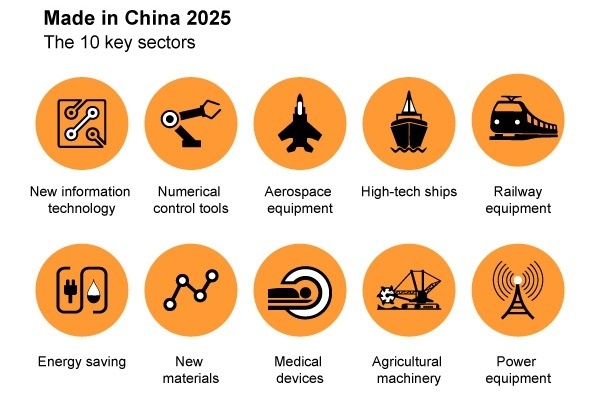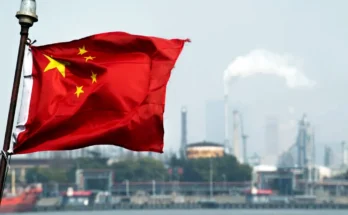Since the beginning of the COVID-19 pandemic in 2020, China has been facing an immense outflow of business and manufacturing units. Business entities that had set up large-scale manufacturing plants and infrastructure years ago suddenly began moving out of the world’s most populated country1.
The ever-growing tensions between the United States of America and China in matters regarding trade and commerce, coupled with economic challenges posed by the Covid-19 pandemic forced these companies to move out their production units from China. Stringent economic policies implemented by the Chinese Communist Party and ever-increasing global discontent towards the Chinese government made it difficult for companies to perform well in China.
Various south and south-east Asian economies such as India, Vietnam, and Thailand saw this as an opportunity to invite the companies to their economic turf. The emerging economies announced mind-boggling incentives and ease of regulations to attract companies to set up production units in those economies.
The Indian Government under the leadership of Prime Minister Narendra Modi announced the Production Linked Incentive scheme which would provide incentives to business entities that produce or manufacture units which will enhance the manufacturing capabilities of the country. The scheme is primarily aimed at attracting companies to set up units in India and hence increase the export capability of the country2.
This along with various initiatives implemented by state governments in India were all aimed at making sure that companies leaving China to find Indian economic and industrial conditions favourable to conduct their businesses.
One of the largest mobile manufacturers in the world, Samsung, shifted its display manufacturing unit from China to Uttar Pradesh3. Tech giant Apple decided to begin production of the iPhone 14 in India along with China4. Similarly, various tech and automobile giants decided to shift their manufacturing base from China to India.
The companies which left China for various reasons were welcomed in India with open arms. Indian media and the general population applauded the initiative taken by governments to attract business to India.
Everyone including economists and market analysts assumed that China suffered huge losses when companies decide to shift their production and manufacturing units to India.
What everyone failed to notice was that China was accomplishing one of its main objectives in the Made in China 2025 plan.
What is Made in China 2025?
Made in China 2025 which is popularly known as MIC2025 is a strategic plan and industrial policy issued by the Chinese Communist Party in May 2015. Made in China 2025 industrial plan focuses on developing the manufacturing sector in China into technology-intensive powerhouses5.
Since the opening up of the Chinese economy by Deng Xiaoping in the late 1970s6, China has grown from a poor malnourished underdeveloped country into an emerging economic superpower. This sudden growth was heavily supported by labour-intensive production and the manufacturing of cheap goods in the main economic centres of the country.
Slowly China turned into one of the largest exporters in the world by providing developed and developing economies with all kinds of cheap petty products. Cheap labour and a humongous population helped companies get both skilled and unskilled labour for a small cost. Companies focussing on manufacturing tech and consumer durable items flocked to China.
Now as the years progressed, the Chinese Communist Party understood that the country cannot grow more powerful by being the manufacturer of cheap products. The Internet boom and the invention of new technologies forced the party to make corrections in the economic policies.

One of the primary objectives of the Made in China 2025 plan is to reduce the role of China as a manufacturer of cheap products in the global economy. By gradually downsizing production and manufacturing of cheap commodities in the country, the government aims to allocate more resources and money to make the manufacturing industry based on new-age technology.
China has already started researching and developing various techniques and processes based on Artificial intelligence and IoT which will change the idea and manufacturing and production completely.
How India is walking a Chinese trap?
When China exits from the role of “Manufacturer of the world”, a country with an immense population and skilled cheap labour should automatically take up the reins. And unfortunately, India is taking up that role voluntarily.
It is termed unfortunate because, by becoming the manufacturer of cheap goods and commodities, India will be employing a large amount of the youth population in these jobs.
While we should be focussing on venturing into new fields such as artificial intelligence, energy, robotics, aerospace, and machine learning, India will be pouring billions of dollars into providing incentives and subsidies to the manufacturing industry. India which is one of the largest economies in the world with a huge skilled youth population will be foregoing an opportunity to become an economic and technology superpower.
China already sees India as a competitor and contender for the title of Asian superpower. By silently allowing companies to leave the country deliberately, China is making sure India does not get a chance to show its real strength as an economic and tech superpower.
Through the Made in China 2025 plan, China is trying to make sure it receives cheap goods and commodities it wants for the development of new age industries, while at the same time avoiding being the manufacturer.
With current economic and industrial policies, India will merely turn into a producer and manufacturer of low-budget goods, which will be consumed by superpowers such as the USA and China to develop their futuristic economic and industrial policies.
“More than 50 companies reportedly pull production out of China due to trade war.” CNBC, 18 July 2019, https://www.cnbc.com/2019/07/18/more-than-50-companies-reportedly-pull-production-out-of-China-due-to-trade-war.html. Accessed 30 August 2022 ↩
“Production Linked Incentive (PLI) Schemes in India.” Invest India, https://www.investindia.gov.in/production-linked-incentives-schemes-india. Accessed 30 August 2022 ↩
Malhotra, Abhishek. “Samsung completes the shift of Display Manufacturing unit from China to Uttar Pradesh.” The Mobile Indian, 21 June 2021, https://www.themobileindian.com/news/samsung-completes-the-shift-of-display-manufacturing-unit-from-China-to-uttar-pradesh-36188. Accessed 30 August 2022 ↩
https://www.msn.com/en-in/money/topstories/apple-plans-to-start-iphone-14-production-in-india/ar-AA10YQV0?fromMaestro=true. Accessed 30 August 2022 ↩
“Made in China 2025 | Center for Strategic and International Studies.” Center for Strategic and International Studies |, 1 June 2015, https://www.csis.org/analysis/made-China-2025. Accessed 30 August 2022. ↩
“Deng Xiaoping & Chinese Economic Reform | Who was Deng Xiaoping? – Video & Lesson Transcript.” Study.com, 4 October 2021, https://study.com/learn/lesson/deng-xiaoping-chinese-economic-reform.html. Accessed 30 August 2022. ↩



